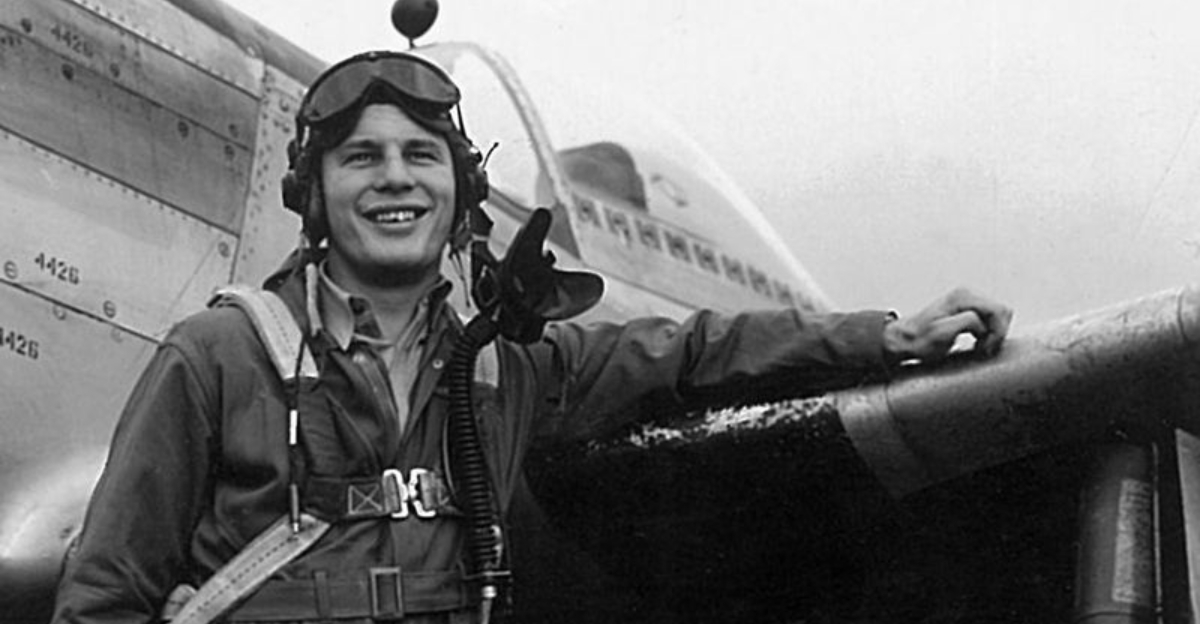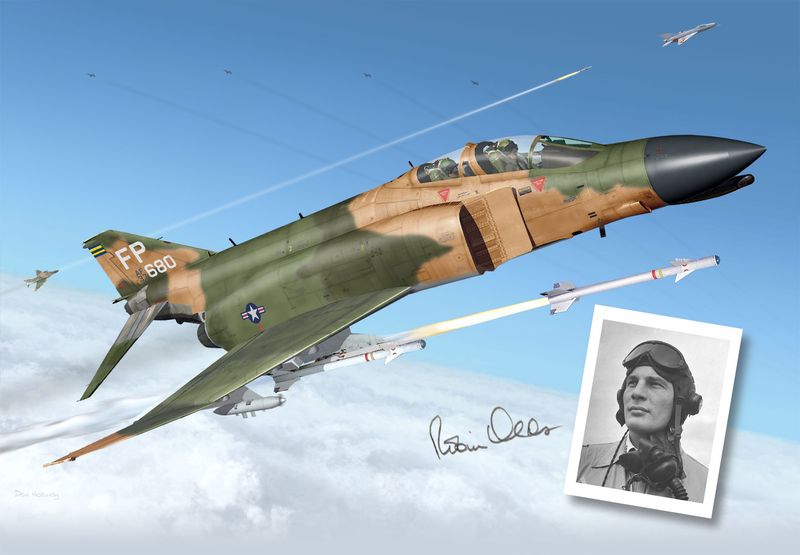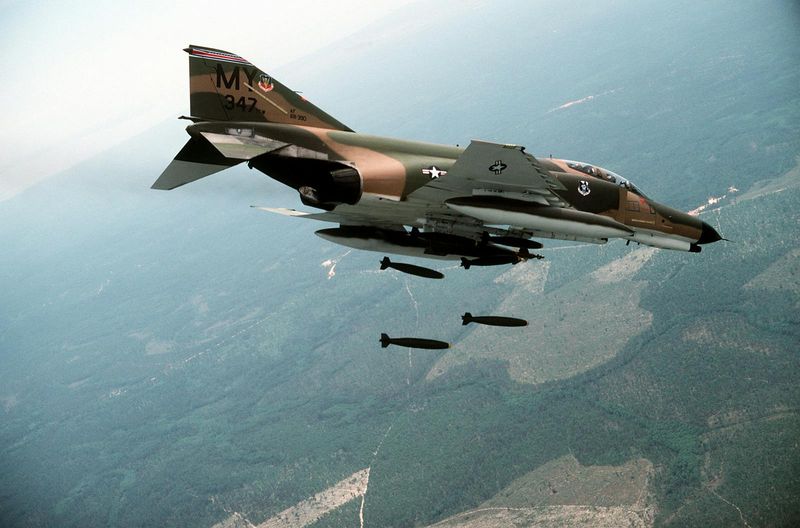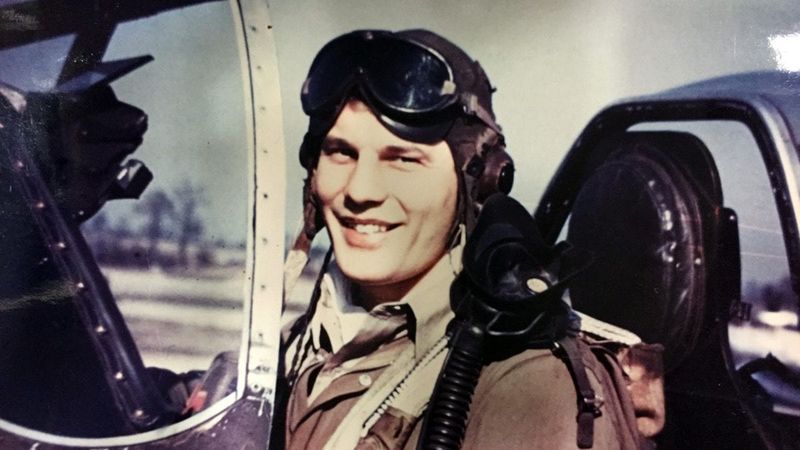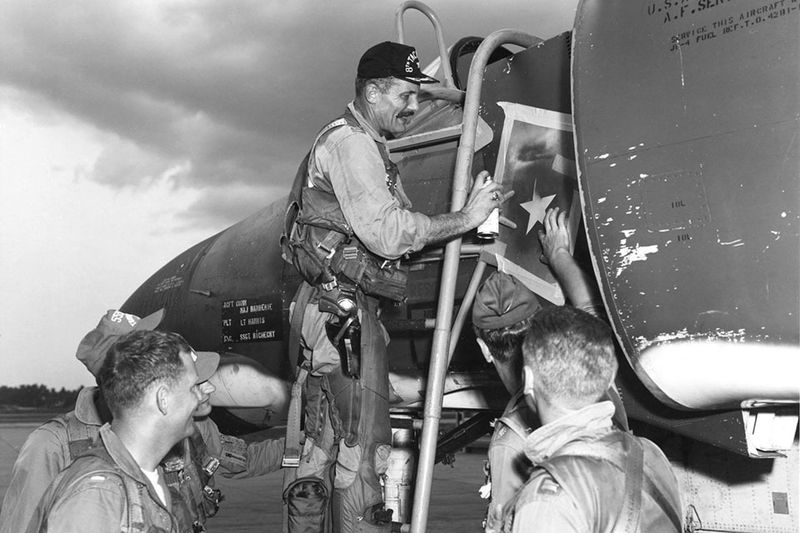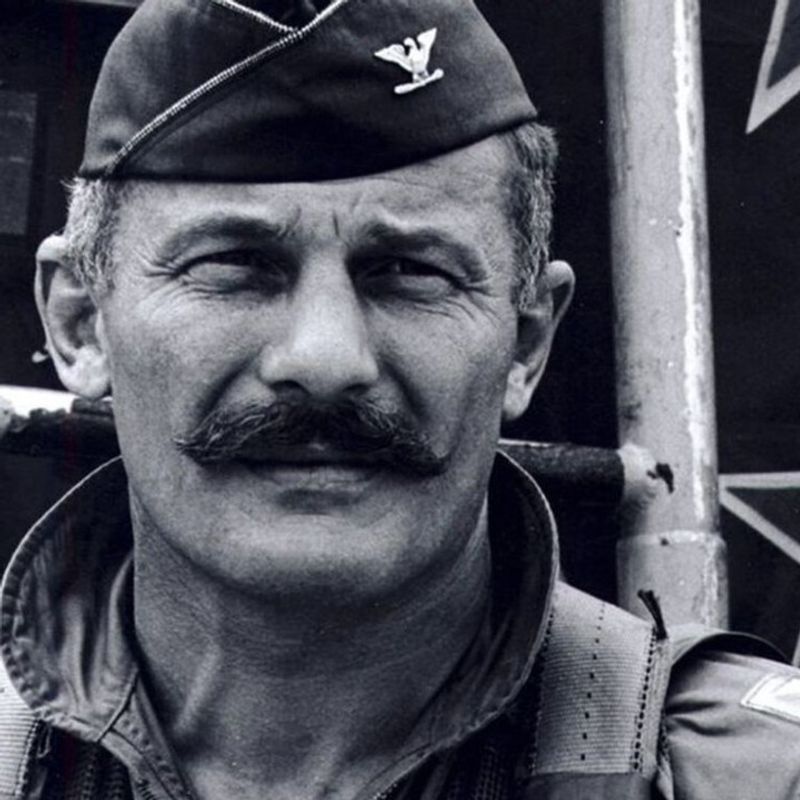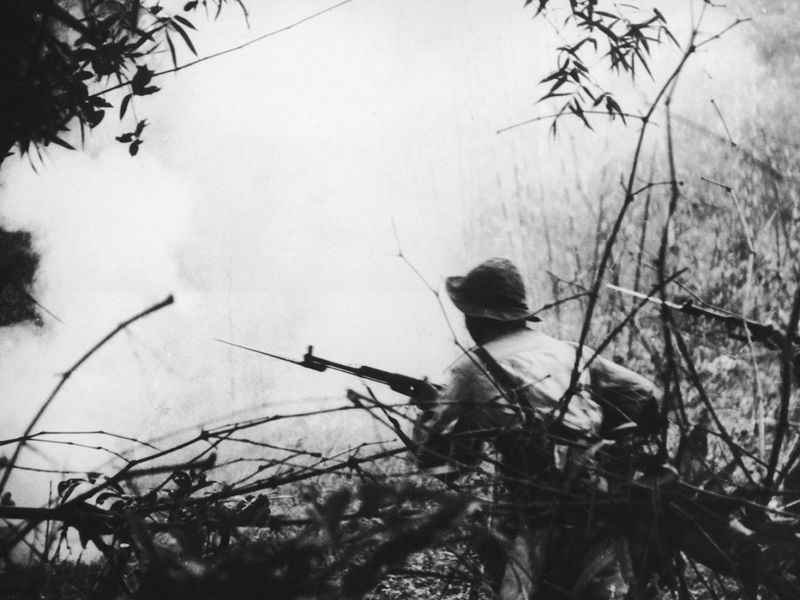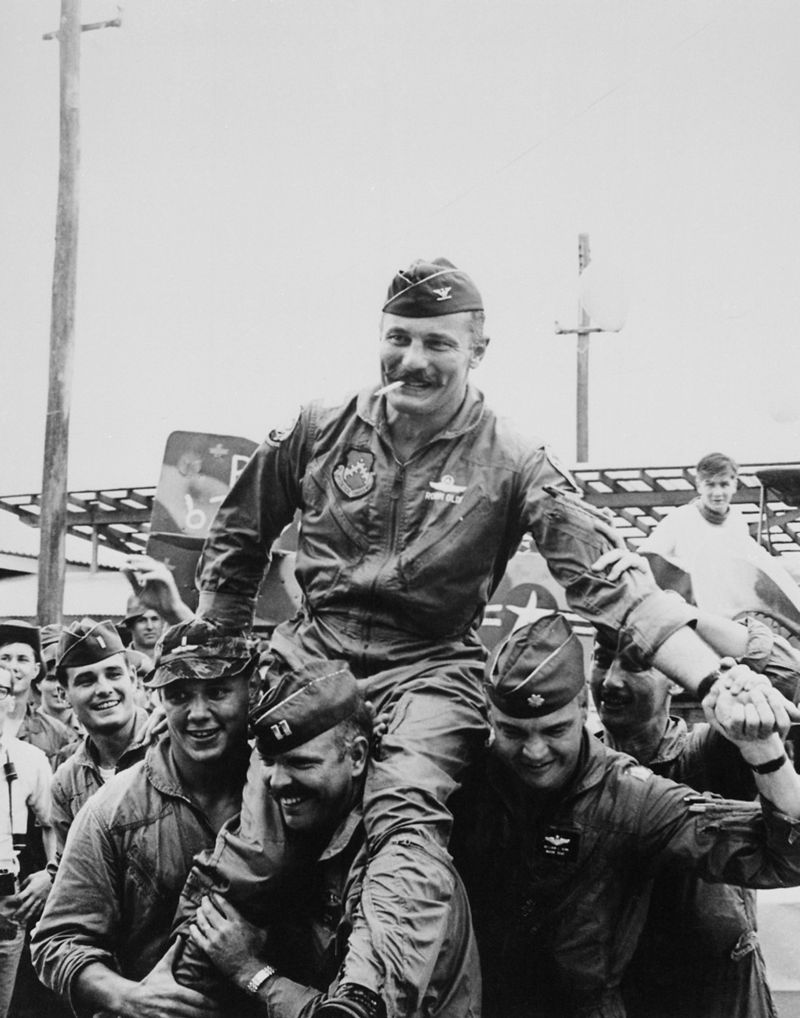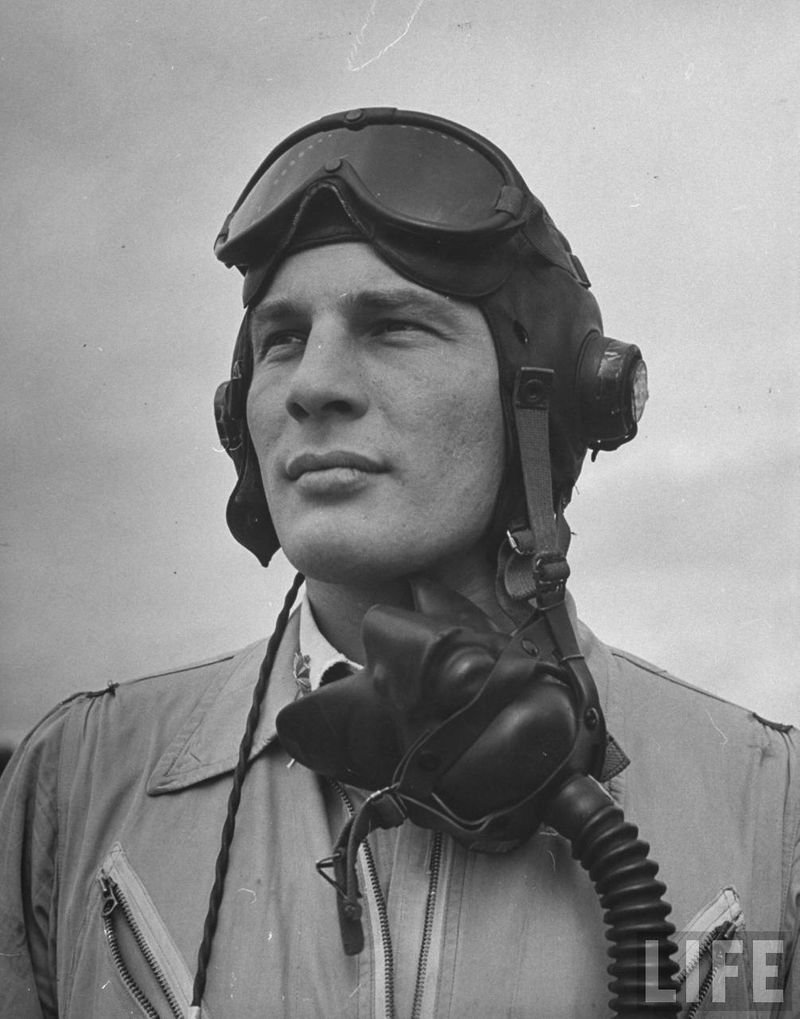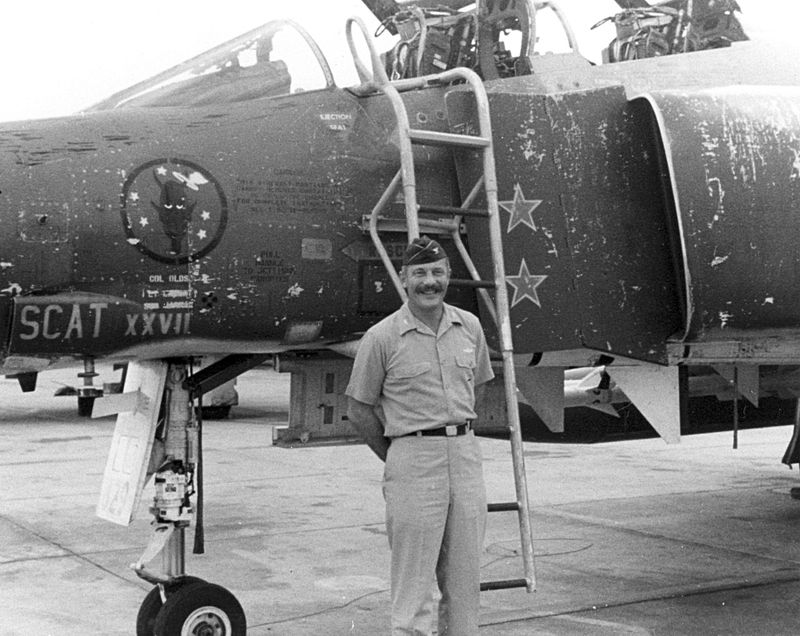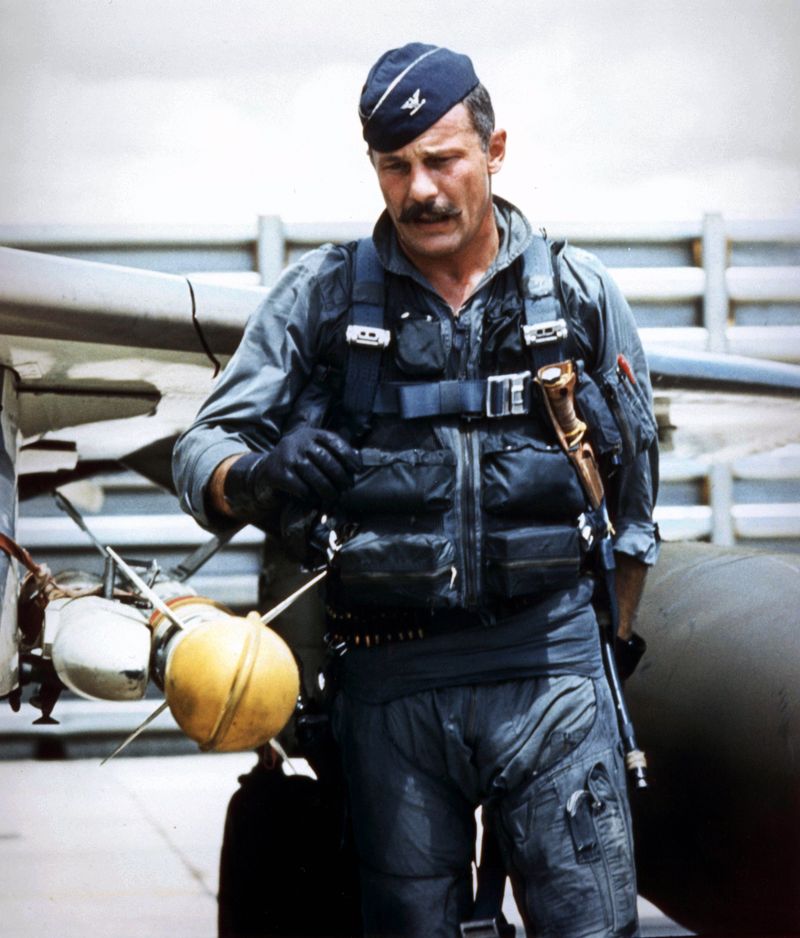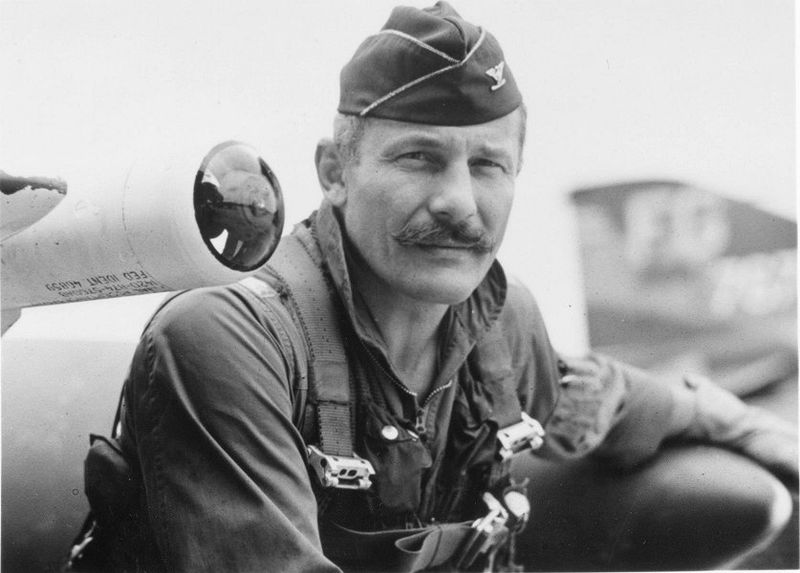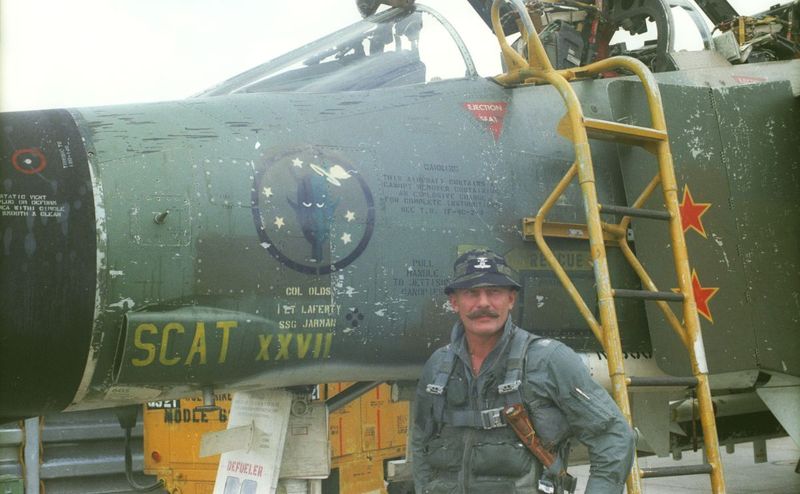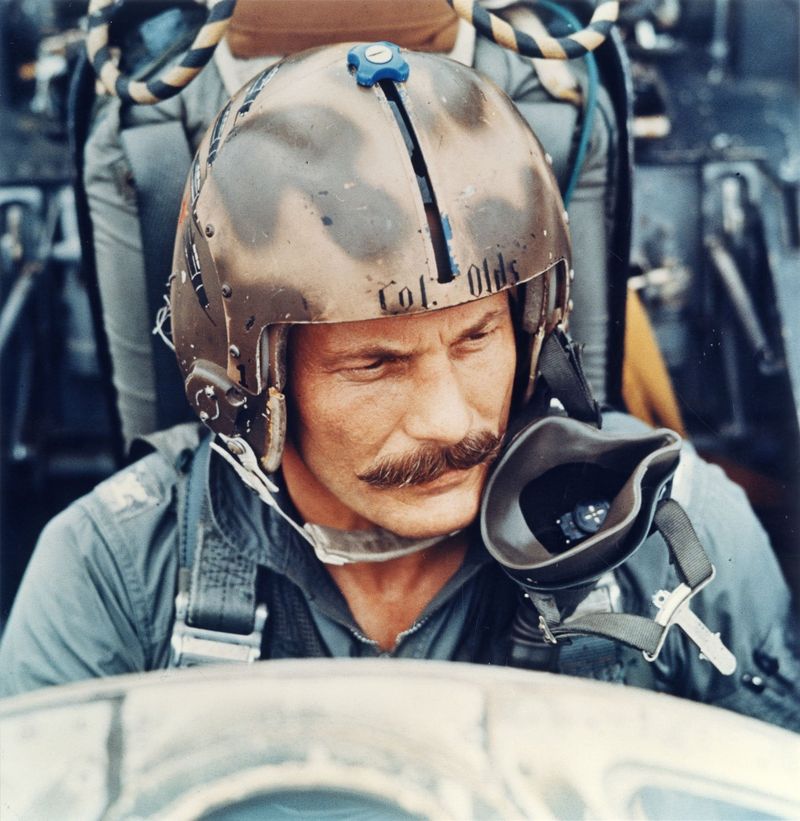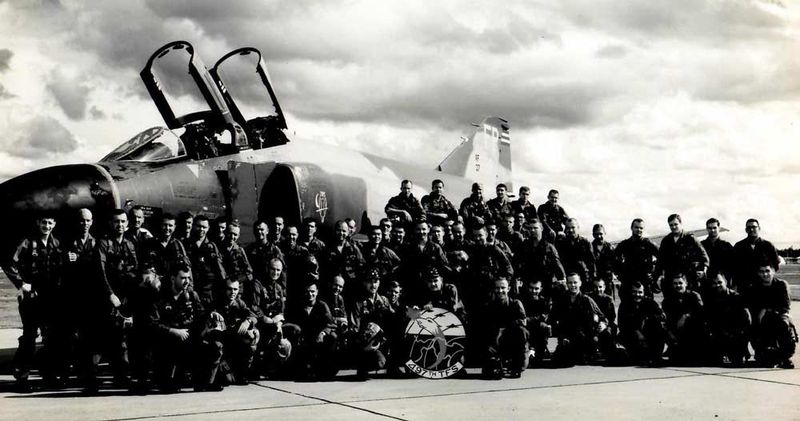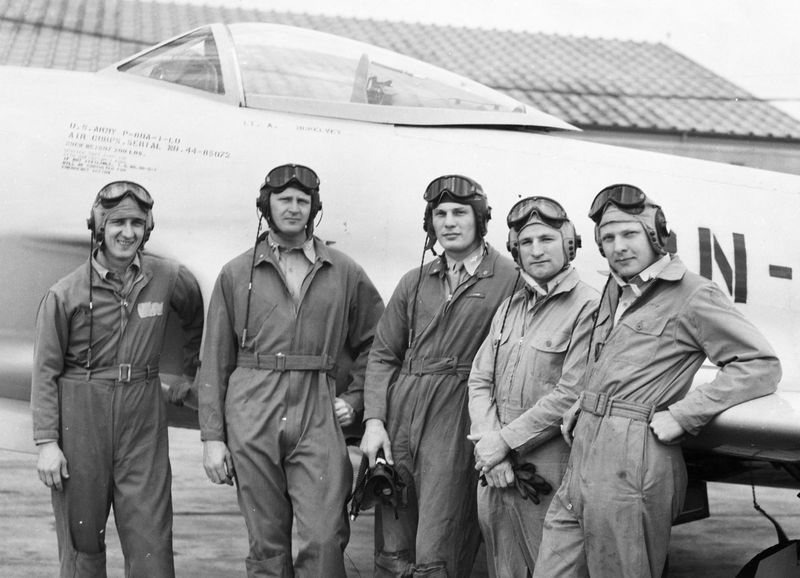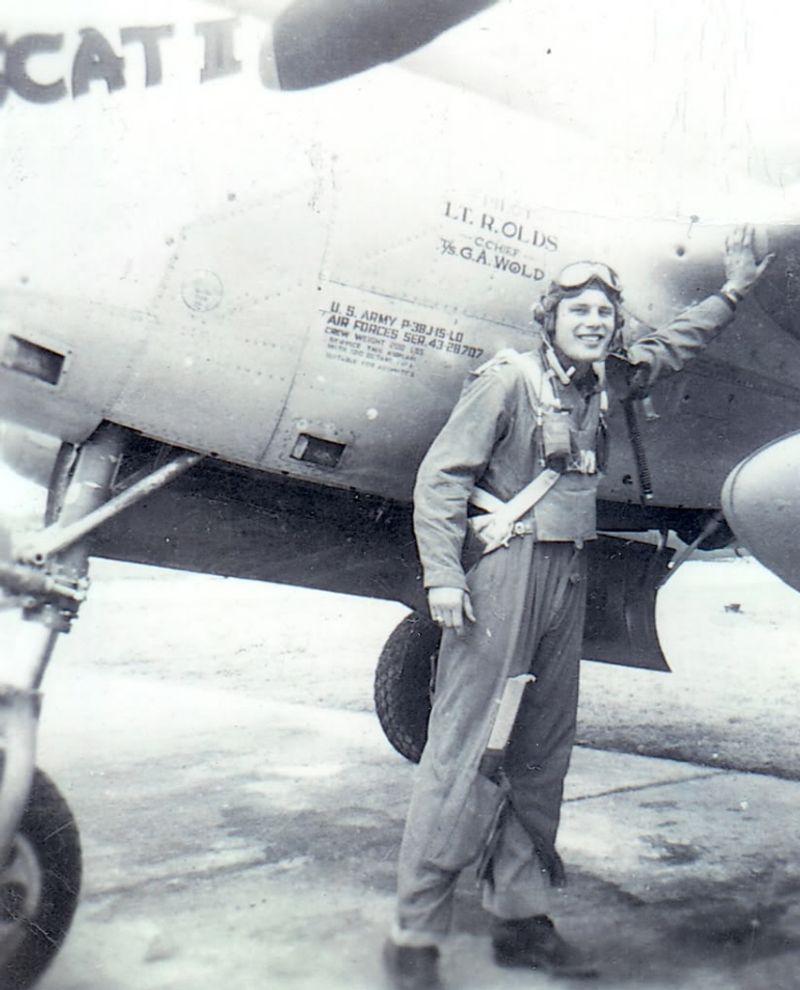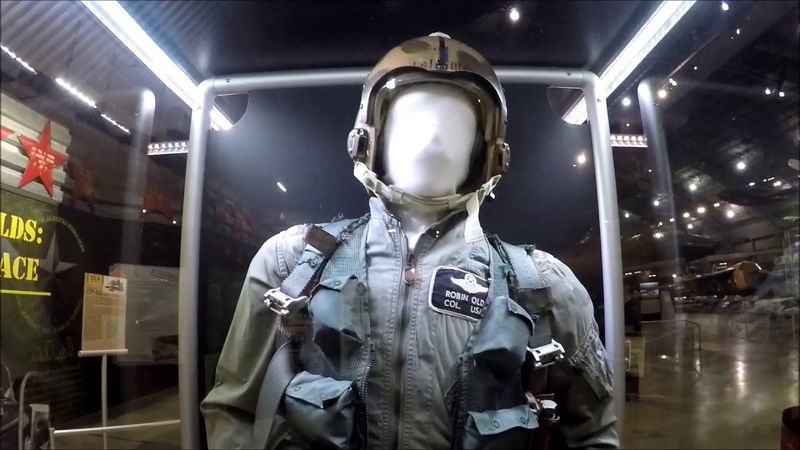They called him the “Gray Ghost”—a figure so fast, so elusive, and so lethal that even the North Vietnamese couldn’t believe he was real. Whether you know him as the ace pilot Col. Robin Olds or associate the name with the legendary F-4 Phantom II fighter jet, the mythos of the Gray Ghost has haunted Vietnam War history for decades. But behind the legend are truths even your high school history teacher missed.
1. The Gray Ghost Wasn’t Just One Man
While Col. Robin Olds earned the nickname through his fearless flying, the term “Gray Ghost” was also used for the camouflaged F-4 Phantom II jets that haunted enemy skies. These jets, painted in gray tones to blend in with the vast skies, were key to stealth operations, making their presence both feared and legendary. The ambiguity around the “Gray Ghost” often confused the enemy as to whether it was a man or machine. Each mission they undertook contributed to the growing mystique and fear surrounding them.
2. His Jet Could Outfly Nearly Anything—Even Soviet MiGs
The F-4 Phantom II, Olds’ aircraft of choice, was fast—capable of speeds over Mach 2.2—and often engaged MiG-17s and MiG-21s in battles where it was outnumbered but not outmatched. Its design allowed for superior speed and agility, enabling it to outmaneuver enemy jets with ease. Pilots trusted its capability to handle intense dogfights, often turning the tide in heated aerial battles. The jet wasn’t just a machine; it was a symbol of American air superiority and technological advancement during the Vietnam War.
3. Robin Olds Was a WWII Ace Before Vietnam
Long before Vietnam, Olds shot down 12 enemy aircraft in World War II, flying a P-38 Lightning and a P-51 Mustang. By the time he arrived in Southeast Asia, he was already a living legend, respected by fellow pilots and feared by enemies. His experience in WWII honed his tactical skills, shaping his strategies in Vietnam. His transition from propeller-driven fighters to the advanced jets of the Vietnam era showcased his adaptability and enduring skill. This history enriched his legend as the Gray Ghost, a formidable pilot in any era.
4. He Created Operation Bolo—A Decoy Mission That Devastated the Enemy
Olds masterminded a deception operation that lured MiG fighters into a trap, resulting in one of the most successful air ambushes of the war. Operation Bolo involved U.S. jets mimicking bombing runs to lure enemy MiGs into the skies. Once engaged, Olds and his team unleashed their firepower, resulting in significant enemy losses. This operation showcased his strategic brilliance and understanding of enemy psychology, reinforcing his reputation as a tactical genius. It was a turning point, boosting morale and altering the air war’s dynamics.
5. He Was Ordered Not to Become an Ace in Vietnam
Pentagon brass feared a PR disaster if Olds was shot down, so they told him to stop flying combat missions after his fourth confirmed kill. He disobeyed, driven by a sense of duty and passion for flying. His defiance spoke volumes about his dedication to his mission and comrades. Olds continued to fly, accumulating more kills and further cementing his status as an ace. His actions defied bureaucratic norms, showcasing his commitment to the mission over personal safety. This defiance only added to his legendary status.
6. He Fooled His Superiors with a Fake Mustache
Olds grew a signature handlebar mustache in defiance of military grooming regulations, turning it into a personal protest against bureaucratic oversight. This ‘bulletproof mustache,’ as he called it, became a symbol of his rebellious spirit. It was his way of challenging authority while maintaining his focus on mission effectiveness. The mustache became iconic, representing Olds’ unique blend of humor, defiance, and leadership. His superiors were often amused, if not completely distracted, by his boldness, while his subordinates saw it as a symbol of solidarity and independence.
7. The Enemy Thought He Was a Ghost—Literally
North Vietnamese radio chatter suggested some pilots believed they were being haunted by a single, supernatural American pilot who couldn’t be shot down. Stories of engagements where Olds’ jet seemed to vanish or reappear at will contributed to this ghostly legend. The fear of the Gray Ghost’s presence was as much psychological as it was physical, affecting enemy morale and strategy. Pilots who encountered Olds spoke of an almost spectral presence, a phantom who seemed untouchable and everywhere at once. This myth only grew with each mission he led.
8. He Flew Over 150 Combat Missions in Vietnam Alone
Olds didn’t just plan missions—he flew them. Again and again. Despite orders to stay grounded, he took to the skies, leading by example and inspiring his squadron. His relentless participation demonstrated his dedication and love for flying, refusing to be sidelined by rank or bureaucracy. Each mission added another chapter to his already storied career, cementing his place in history as a hands-on leader. His direct involvement provided confidence and morale to his fellow pilots, reinforcing the idea that a true leader shares whatever risks his team faces.
9. He Turned the Air War Around in Just 7 Months
As commander of the 8th Tactical Fighter Wing at Ubon, Thailand, Olds reshaped tactics, morale, and results in record time. His leadership saw the implementation of new strategies and a boost in pilot confidence, leading to increased enemy losses. Olds’ focus on teamwork and innovative tactics revitalized the Fighter Wing, making it one of the most effective units in the Vietnam War. He built an intense esprit de corps among his men, emphasizing precision, aggression, and unity. These changes marked a strategic shift, ensuring air superiority and mission success.
10. He Refused to Use Missiles Only
Despite the U.S. military’s shift to missile-based dogfighting, Olds insisted on retraining pilots in old-school aerial combat—and it paid off. He recognized the limitations of early missile technology and the enduring value of guns in close combat situations. His insistence on training for all scenarios ensured his pilots had a tactical edge, mastering both missile and gunnery techniques. This holistic approach was critical in unexpected combat situations, allowing pilots to adapt and survive. Olds’ foresight in training saved lives and maintained air superiority.
11. He Hated the Term “War Hero”
Olds once said, “There are no war heroes—only survivors.” He focused on his team, not the medals, and believed that the true heroes were those who supported each other. This philosophy underpinned his leadership style, emphasizing humility and collective achievement over individual accolades. His legacy is marked by this perspective, prioritizing the memory and sacrifices of all service members. For Olds, the essence of heroism lay in the shared journey, the struggles, and the survival of his team in the face of overwhelming odds. His humility endeared him to many.
12. He Was Nearly Court-Martialed More Than Once
Olds’ disdain for red tape and tendency to speak his mind didn’t win him many friends at the Pentagon. His rebellious nature and refusal to adhere strictly to protocol often placed him at odds with military brass. Despite this, his results in the field spoke for themselves, often protecting him from severe consequences. His career was peppered with close calls regarding court-martials, yet his charisma and effectiveness often turned potential punishments into grudging respect. This tension highlighted the friction between rigid rules and the dynamic needs of war.
13. He Turned Down a General’s Star to Stay in the Air
Promotions would’ve taken him out of the cockpit. Olds chose the clouds over the corner office, valuing the thrill and camaraderie of flying above administrative duties. This decision reflected his passion for direct involvement in missions and his disdain for bureaucratic constraints. For Olds, the sky was where he belonged, leading his men from the front rather than from a desk. His choice resonated with many who saw him as a leader who prioritized mission success and pilot welfare over personal advancement. It was a rare, principled stand in military circles.
14. He Mentored a Generation of Pilots—Then Disappeared
After retiring in 1973, Olds largely withdrew from public life, leaving behind a legacy cloaked in legend. His influence, however, continued through the many pilots he mentored, who carried forward his tactics and ethos. Olds’ teachings emphasized adaptability, courage, and teamwork, elements that became integral to American fighter pilot training. His disappearance from the spotlight only added to his mystique, as stories and anecdotes from his protégés kept his spirit alive in military circles. Olds’ impact was felt long after he stepped away from active duty.
15. The “Gray Ghost” Lives On in Fighter Pilot Lore
Today’s pilots still invoke his name during training exercises, honoring his tactics and fearless flying. The Gray Ghost’s legacy is alive in the skies, a symbol of excellence and bravery. His innovative strategies and fearless leadership continue to inspire, shaping the ethos of modern air combat training. Pilots today strive to emulate his courage and skill, ensuring that his impact resonates across generations. The Gray Ghost remains a mythical figure, his essence infused into the DNA of air combat training, embodying the spirit of daring and ingenuity.
16. He Had No Interest in Politics—Only the Mission
While many veterans wrote memoirs or ran for office, Olds stayed focused on the fighter community and its future. His life post-military was dedicated to advocating for better training and resources for pilots, rather than seeking political influence or fame. Olds’ commitment to his craft over personal gain reflected his belief in the importance of preparedness and skill in aviation. His legacy is marked by this unwavering dedication, inspiring those who value action and impact over rhetoric. Olds’ singular focus on mission readiness defined his post-war contributions.
17. He Once Landed with Fuel Tanks Hanging by a Thread
Even when badly damaged, Olds refused to eject. He brought his Phantom home—barely. This instance of skill and determination became legendary, showcasing his refusal to give up on his aircraft or mission. The landing was a testament to his piloting prowess and unyielding spirit. For Olds, ejecting was not an option; his connection to his aircraft and mission was too strong. This story has been told across military circles, illustrating his tenacity and symbolic of the never-quit attitude he embodied. It remains a powerful narrative of courage and resilience.
18. He Died in 2007—But Some Still Say They See Him in the Sky
Aviation buffs and vets alike speak of “Gray Ghost sightings”—not of a man, but of a legend that refuses to fade. Col. Robin Olds left behind a legacy that transcends his lifetime, symbolized by stories of his spectral presence in the sky. These tales reflect the enduring impact of his spirit and the indelible mark he left on aviation history. The Gray Ghost continues to inspire new generations, a testament to Olds’ legendary status. His memory lives on in the hearts of those who admire his courage and contributions.
